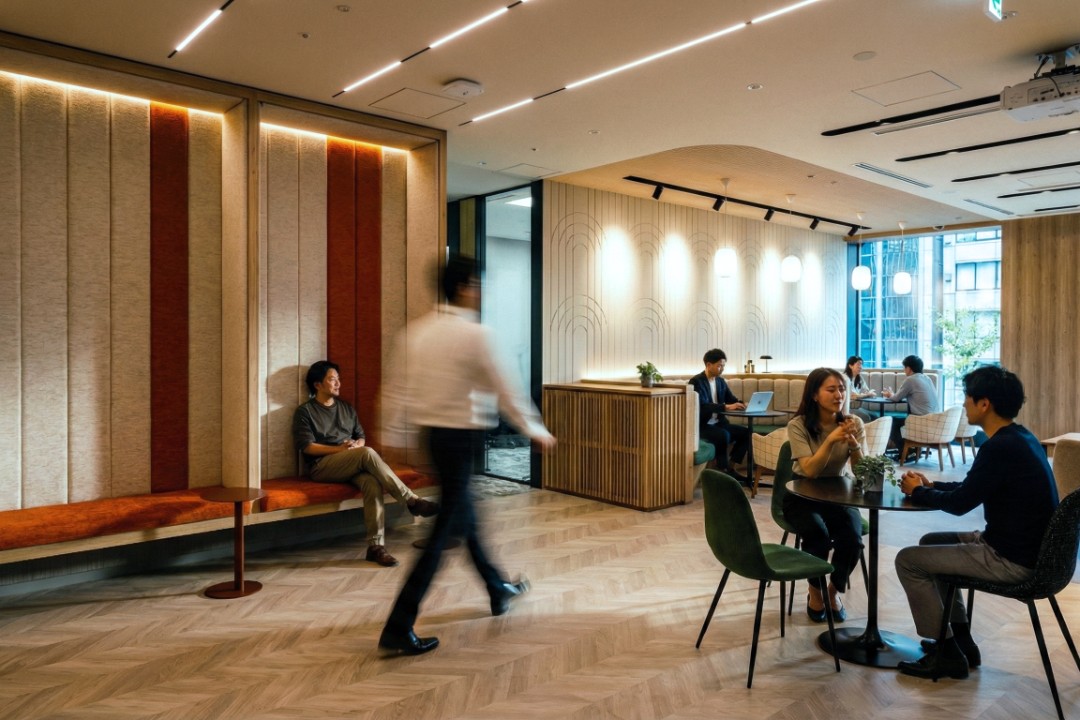
From Central HQ to Flexible Office Networks: Why the Hub & Spoke Model Is Gaining Momentum in Workspace Strategy Across Countries
Today’s workforce is more diverse and dynamic than ever before. With the rapid evolution of digital tools, artificial intelligence (AI), and communication technologies, businesses must make strategic decisions about where to hire and expand quickly in some markets and cities, while reducing headcount in others due to changing business needs or market conditions. To stay competitive, companies must respond swiftly and efficiently without wasting time or resources.
How AI Is Reshaping Workspace Strategy
AI is transforming how businesses operate, manage talent, and optimise resources. From automating repetitive tasks and supporting intelligent decision-making to enabling real-time data analysis for site selection and market expansion, AI is helping leaders navigate the complexities of a distributed workforce. When integrated into workspace strategies, AI can even predict space utilisation trends, enhance employee experience through smart office environments, and streamline operations across multiple locations.
Balancing Labour Costs and Strategic Presence
Another critical factor influencing workspace decisions is the cost of labour, which varies significantly across countries and regions. Some markets offer access to highly skilled talent at lower operational costs, while others, despite having higher labour expenses, may be strategically important for client proximity or brand presence. The hub and spoke model allows companies to balance these dynamics by building out operations in cost-effective locations while maintaining key hubs in high-value markets. This optimises business strategy and helps control expenses without compromising growth or service quality.
At the same time, multiple generations now coexist in the workforce. Baby Boomers often value face-to-face interaction and structure. Generation X seeks autonomy and flexibility. Millennials prefer purpose-driven, adaptable environments. Generation Z expects digital-first, flexible workspaces. Supporting this multigenerational workforce requires a workplace strategy that is inclusive, adaptable, and geographically flexible.
What Is the Hub and Spoke Model?
The hub and spoke model addresses these needs effectively. It involves maintaining a central hub office in a key business district and supporting it with multiple smaller spoke offices located in strategic areas. These spoke offices can be situated within the same city, across different regions of a country, or internationally. This model brings workspaces closer to where employees live, clients operate, or new market opportunities are emerging.
This decentralised approach supports hybrid and remote work models, enhances access to talent, improves employee work-life balance, and increases business resilience. It also allows businesses to scale operations up or down based on current demands.
As AI continues to evolve, it empowers leaders to manage these networks with greater precision. From intelligent scheduling and automated visitor management systems to personalised digital concierge services, AI is creating smarter, more responsive office experiences, regardless of location.
The Role of Serviced Offices in Flexible Expansion
Serviced offices play a key role in implementing this strategy. They eliminate the need for upfront capital expenditure, as offices come fully equipped and ready for immediate use. Move-in timelines are short, often just a few days. Businesses can scale their office space according to current needs and gain access to premium locations without the long-term commitment or high overheads of traditional leases. This enables organisations to focus on their core operations while office infrastructure and services are managed by a professional provider.
Who Can Benefit from the Hub and Spoke Model?
The hub and spoke model is especially suited to multinational companies decentralising regional operations, startups and SMEs entering new geographic markets, project-based teams or short-term business deployments, hybrid or remote-first companies requiring flexible collaboration spaces, and professional service firms maintaining a local presence with lower complexity.
For businesses exploring new markets where they have not yet established a physical team, a virtual office can be a practical starting point. This allows them to establish a local presence, tap into the market, and test demand without committing to a full office setup.
How Compass Offices Supports Your Hub & Spoke Strategy
Compass Offices provides a network of premium workspaces in key business hubs across Asia Pacific and Australia, including Hong Kong, Singapore, Japan, China, Vietnam, Malaysia, Australia, and the Philippines. Whether you are setting up a central hub, expanding to new spokes, or exploring new markets through a virtual presence, we provide the infrastructure and support you need.
Each location offers fully managed office solutions with flexible terms, modern design, enterprise-grade technology, and a dedicated local team to support your business success. Our spaces are also designed to support smart office integration, including AI-enabled features, ensuring your teams can work efficiently and comfortably wherever they are.
Adapting to a New Way of Working
The shift toward decentralised, flexible workspace strategies is not temporary. It reflects a structural transformation in how businesses operate. As AI, digital transformation, global labour cost differences, and generational diversity reshape the workplace, the hub and spoke model provides a scalable, resilient, and intelligent framework to support growth and innovation.
If you are considering how to adapt your workspace strategy to meet the needs of today’s workforce, Compass Offices is ready to help. We have supported multiple of companies in rethinking their approach, and we welcome the opportunity to do the same for you.


